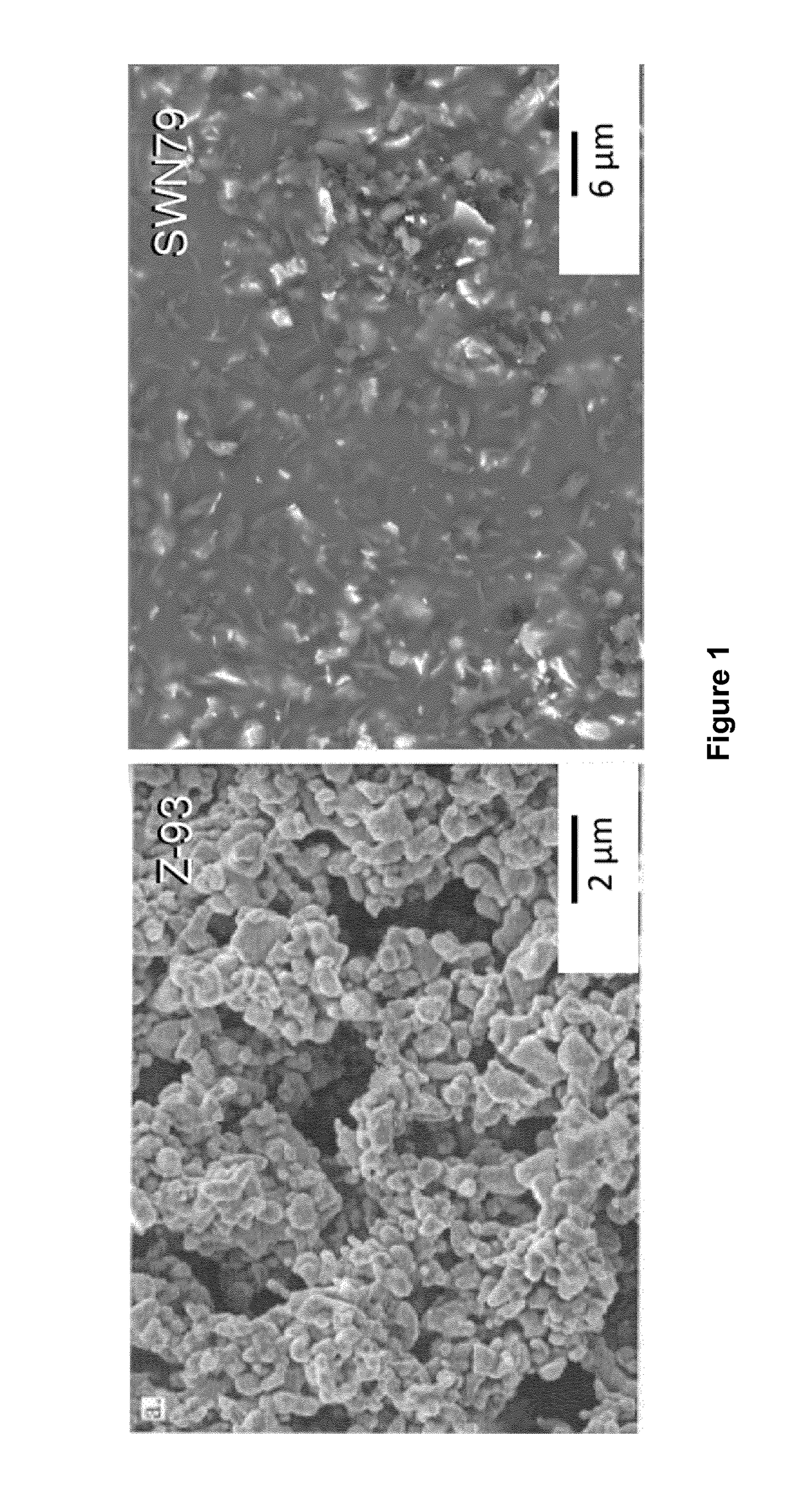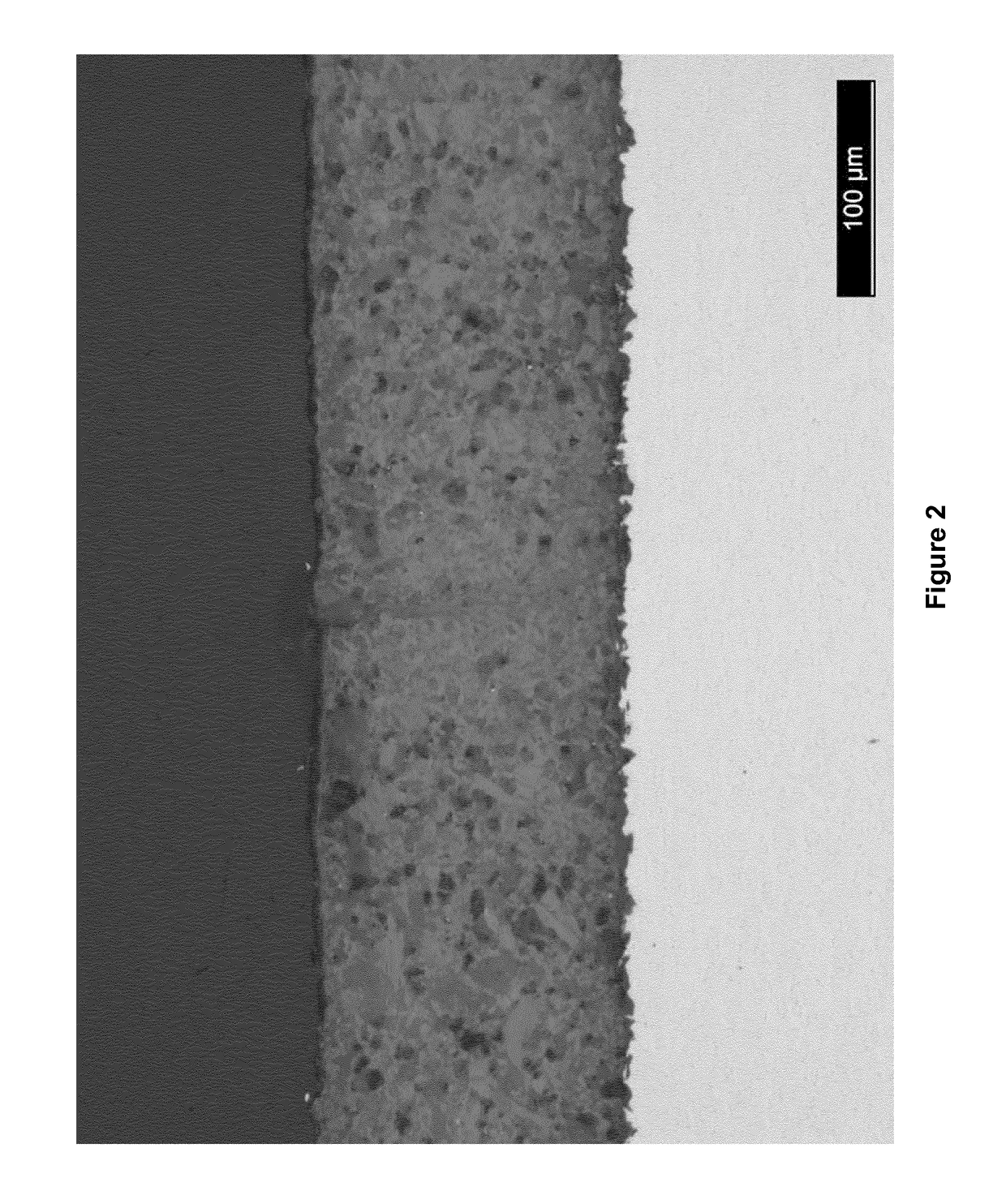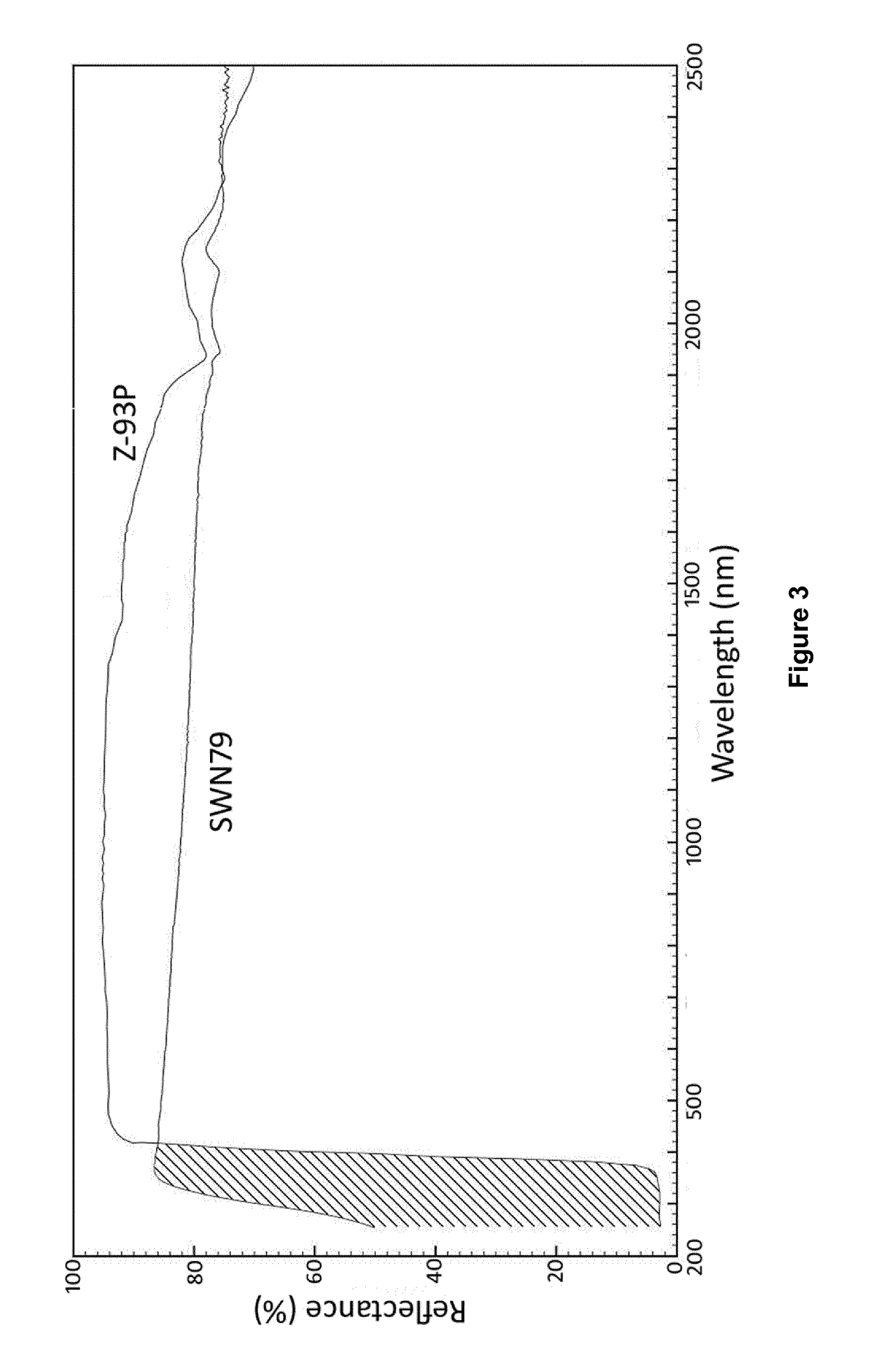Thermal control coatings
a technology of thermal control coatings and coatings, applied in coatings, reflective/signal paints, alkali metal silicate coatings, etc., can solve the problems of arcing and possible damage to sensitive electronic equipment on or in spacecraft, less than optimal electrostatic dissipation, adverse physical effects, etc., to accelerate the degradation of materials and damage the overall device
- Summary
- Abstract
- Description
- Claims
- Application Information
AI Technical Summary
Benefits of technology
Problems solved by technology
Method used
Image
Examples
example 1
[0121]Curable coating compositions according to embodiments of the invention, which we refer to as SWN79, SWK66 and SWL40, were prepared in accordance with the m (wet %) of ingredients shown under Formulation A of Table 1.
[0122]
TABLE 1m (wet %)m (dry %)V (dry %)FORMULATION ASWN79Y2O330.0047.8133.10TCP10.0015.9417.64N7960.0036.2649.27SWK66Y2O330.0047.3032.59TCP10.0015.7717.37K6660.0036.9450.04SWL40Y2O337.5058.2543.89TCP12.5019.4223.39L4050.0022.3332.73FORMULATION BN79 MinY2O37.5017.009.56TCP2.505.675.09N7990.0077.3485.35K66 MinY2O37.5016.619.31TCP2.505.544.96K6690.0077.8585.73L40 MinY2O315.0039.0625.52TCP5.0013.0213.60L4080.0047.9260.89FORMULATION CN79 LowY2O315.0029.8018.17TCP5.009.939.68N7980.0060.2772.14K66 LowY2O315.0029.2717.77TCP5.009.769.47K6680.0060.9772.76L40 LowY2O326.2552.5537.87TCP8.7517.5220.18L4065.0029.9341.95FORMULATION DN79 HighY2O337.554.3839.60TCP12.518.1321.10N7950.027.4939.30K66 HighY2O337.553.9439.12TCP12.517.9820.85K6650.028.0840.04L40 HighY2O330.055.7641.19TCP...
example 2
[0129]Curable coating compositions, namely cured SWN79, SWK66 and SWL40, according to embodiments of the invention, were deposited onto metal samples and cured as follows.
Cured SWN79
[0130]After mixing using the roller-ball mill as described in Example 1, the liquid SWN79 composition was sprayed onto the surface of a Grade V titanium (Ti6Al4V) substrate using a Trilogy™ AS spray gun, available from Nordson Corporation (Westlake, Ohio, USA). Spraying was carried out at a distance of 25 cm from the target surface until a coverage of 100 μm thickness was achieved. After spraying, the sprayed surface was covered with, but not in contact with, aluminium foil and allowed set overnight, i.e. for 12 to 16 hours at a temperature of 20° C. At this stage, the surface was no longer glossy in appearance, and the sample was transferred to a conventional fan assisted oven. The sample was heated to 250° C. in the oven as per the following thermal (cure) cycle:[0131]Heat from room temperature (20° C....
example 3
[0145]The attributes of the substrates coated with cured SWN79, cured SWK66 and cured SWL40, prepared in Example 2, were investigated as described below.
[0146]The diffuse reflectance R of the cured coatings SWN79 and SWL40 present on the titanium substrates prepared in Example 2 was measured in the UV / Vis / NIR range (250-2500 nm) using a Perkin Elmer Lambda 9 / 19 double beam spectrophotometer with a 150 mm integrating sphere attachment. Diffuse reflectance was measured against a Spectralon® reference to produce a reflectance trace (not shown) which was weighted against the Air Mass Zero (ASTM E490) solar irradiance spectrum. As the coated substrates were opaque, solar absorbance αs is simply: 1-R. The results are shown in Table 2.
[0147]
TABLE 2Cured SWN79Cured SWL40αs (%)thicknessαs (%)thickness17.3120 μm13.590 μm
[0148]Thus, the solar absorbance of the cured coatings SWN79 and SWL40 was found to be excellent, having αs of no greater than 0.2 (i.e. αs (%) no greate...
PUM
| Property | Measurement | Unit |
|---|---|---|
| particle size | aaaaa | aaaaa |
| solar absorptance | aaaaa | aaaaa |
| solar absorptance | aaaaa | aaaaa |
Abstract
Description
Claims
Application Information
 Login to View More
Login to View More - R&D
- Intellectual Property
- Life Sciences
- Materials
- Tech Scout
- Unparalleled Data Quality
- Higher Quality Content
- 60% Fewer Hallucinations
Browse by: Latest US Patents, China's latest patents, Technical Efficacy Thesaurus, Application Domain, Technology Topic, Popular Technical Reports.
© 2025 PatSnap. All rights reserved.Legal|Privacy policy|Modern Slavery Act Transparency Statement|Sitemap|About US| Contact US: help@patsnap.com



